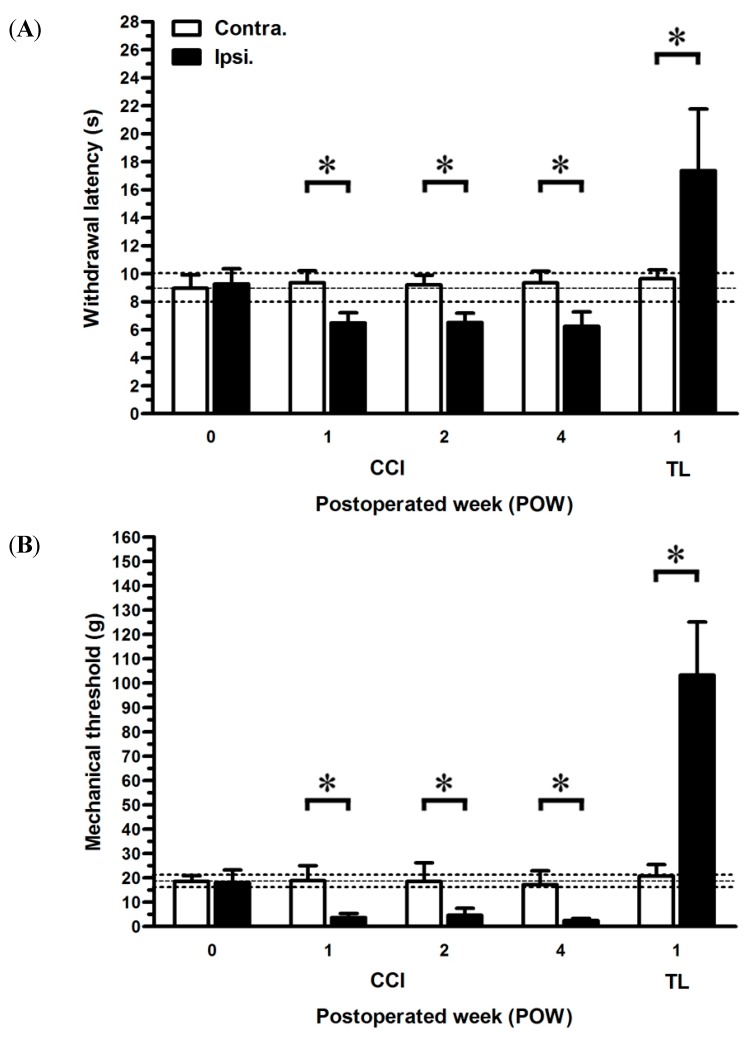Figure 1.
Effects of nerve compression injury on the temporal changes of neuropathic pain behaviors. The sequential changes of painful behaviors were shown in (A) thermal hyperalgesia and (B) mechanical allodynia. The thermal threshold of noxious radial heat was defined as withdrawal latency (s) and the degree of mechanical allodynia was expressed as the mechanical threshold (g) to the innocuous Von Frey filaments. Behavioral assessments were expressed as the mean ± standard deviation (SD) (n = 5 at each time points after chronic constriction injury (CCI), n = 5 at post-operated week (POW) 1 after tight ligation (TL)). Each bar of values depicted in the contralateral sides (Contra., open bars) and ipsilateral sides (Ipsi., filled bars). Student’s t test was applied to examine the differences between the contralateral and ipsilateral sides at the same time points. Two-way repeated measures ANOVA was also performed following Bonferroni’s post-hoc test. * p < 0.05, indicated as a significant difference.

